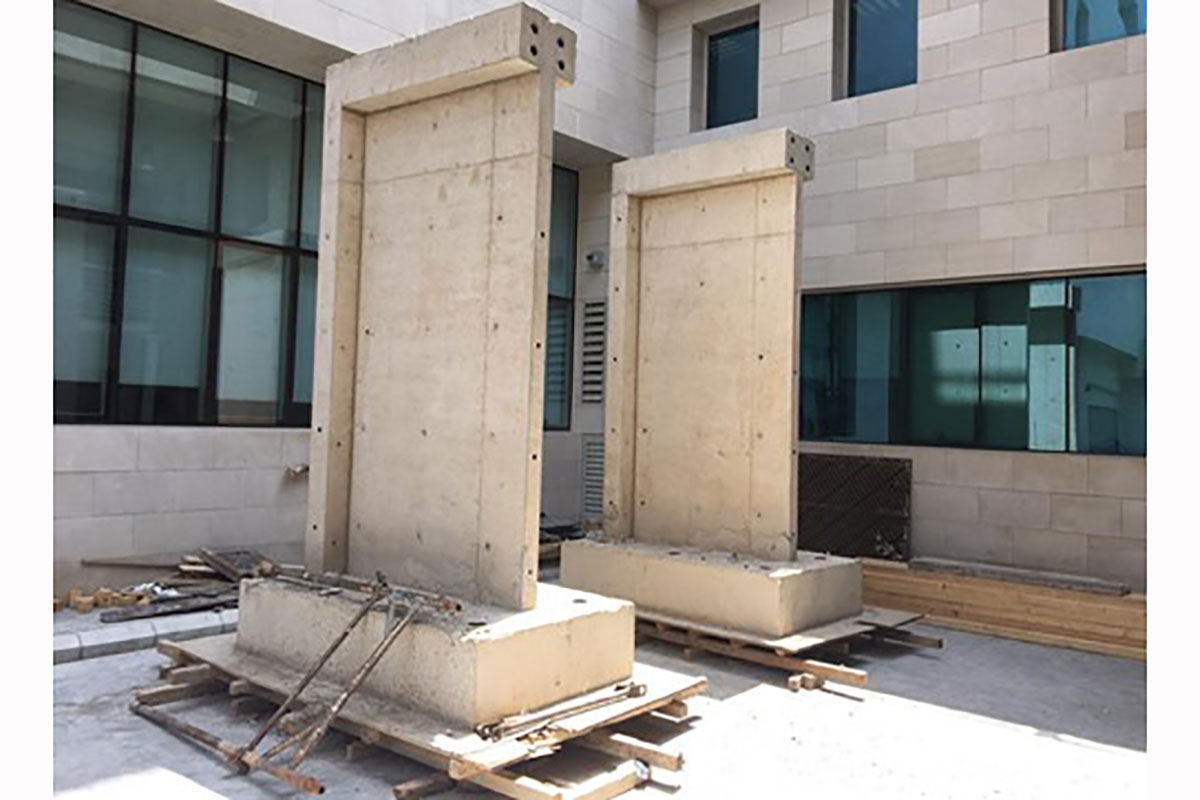Stability Retrofit of Concrete Shear Walls using Carbon Fiber Reinforced Polymers
Project Details
- Student(s): Joanna Youssef
- Advisor(s): Dr. Caesar Abi Shdid
- Department: Civil
- Academic Year(s): 2021-2022
Abstract
Shear walls are key structural elements when it comes to resisting lateral loads in reinforced concrete buildings. Thus, they are exposed to extensive loading during earthquakes. Shear walls designed according to modern ACI provisions have demonstrated acceptable performance in the recent events such as Chile (2010) and New Zealand (2016) earthquakes. However, a large number of old structures that were constructed in the 1960s period have shear walls that do not conform to modern building codes, which pose a threat to public safety in case of a seismic event. This research examines the seismic performance of slender, under-reinforced shear walls, and proposes retrofit guidelines to enhance the strength and ductility of this type of walls using carbon fiber reinforced polymer. Two full-scale shear walls were constructed with similar dimensions and material properties to shear walls in old buildings in the Beirut, Lebanon area. One of the walls was designated to be a control and tested as is, while the other was retrofitted using externally glued CFRP laminates with proper anchoring systems. The CFRP layout was designed to provide the missing confinement which is supplied by special boundary elements as per ACI section 18.10.6. The two walls were subjected to in-plane loading using a hydraulic actuator. Force deformation plots were produced for both tests and further specific in-plane and out-of-plane displacements were monitored using two high-performance cameras connected to a data acquisition software. Strain gauges were placed at different levels on the wall rebar to monitor their strain profile and yielding points. The study showed that the retrofitted wall had better performance than the control. Drift capacity was improved by 17% and longitudinal bar buckling was prevented. Moreover, it was observed that the control wall compression zone was completely crushed at 2.5% drift; whereas the retrofitted wall reached a drift of 3% with an intact concrete section. The CFRP laminates showed to preserve the concrete core and retain the concrete chunks that crush and fall off during cyclic loading. The results of this study will aid in the development of a unified retrofit scheme to enhance the seismic performance of shear walls in old buildings, thus improving their safety in case of a seismic event.
